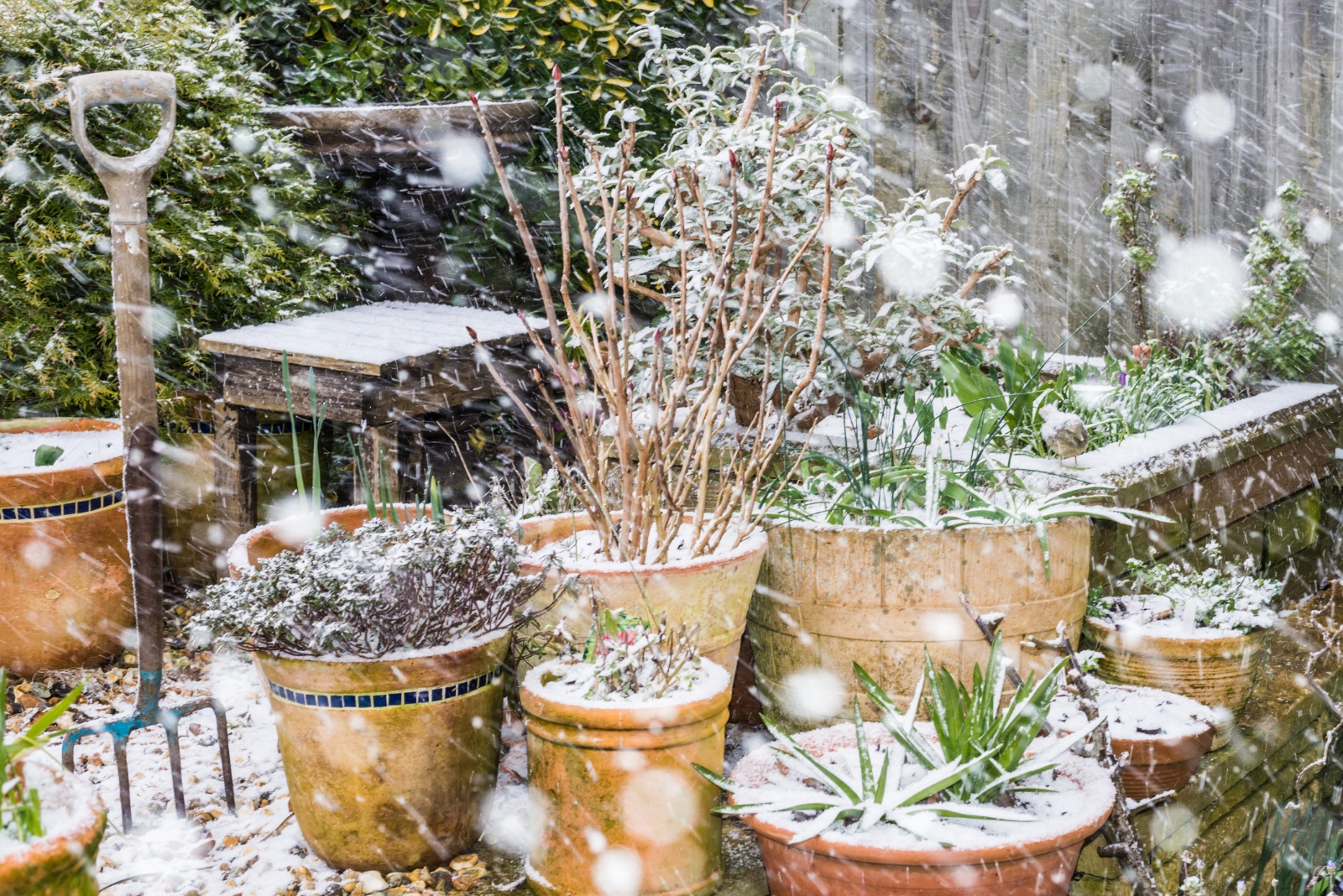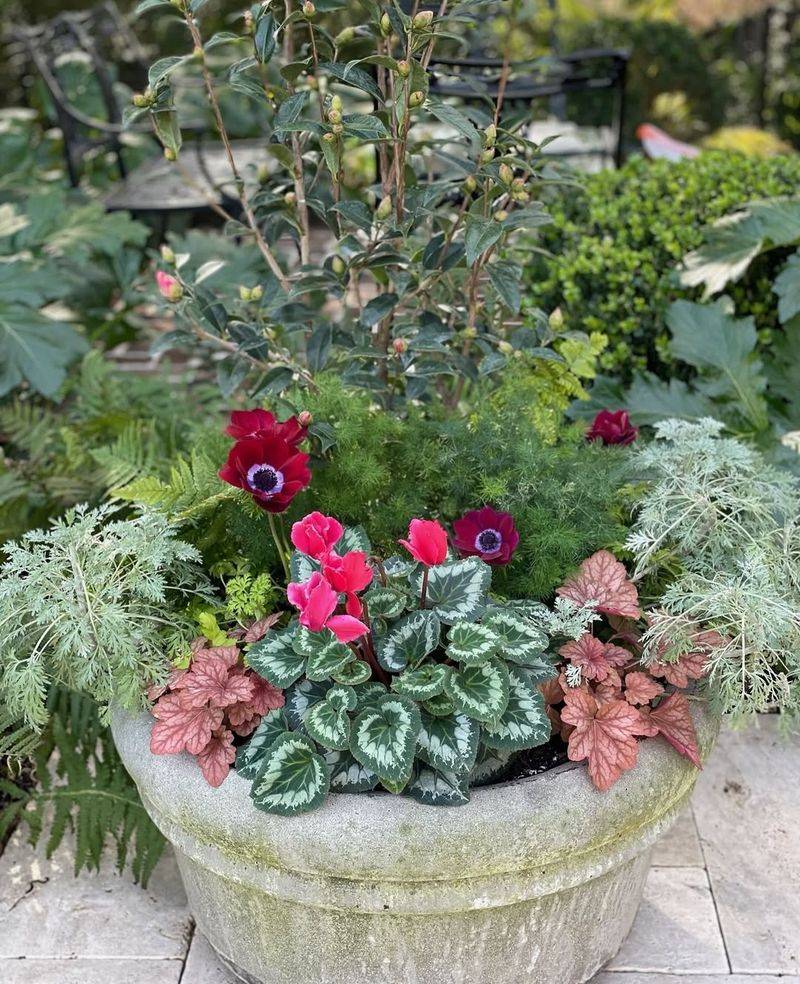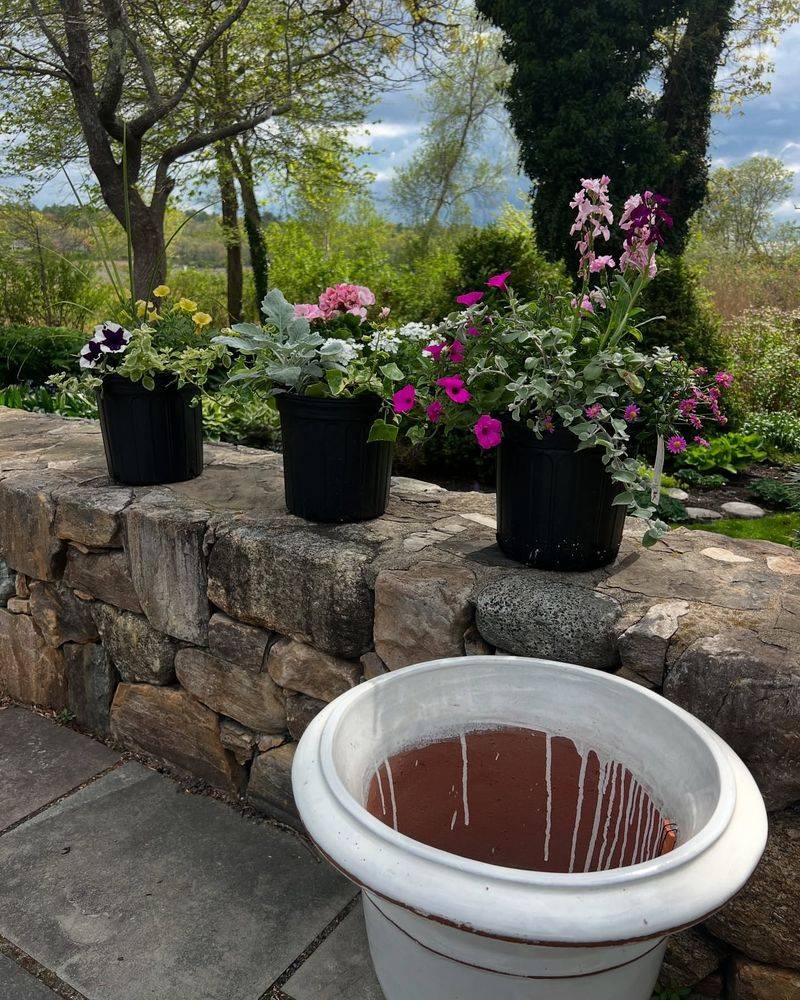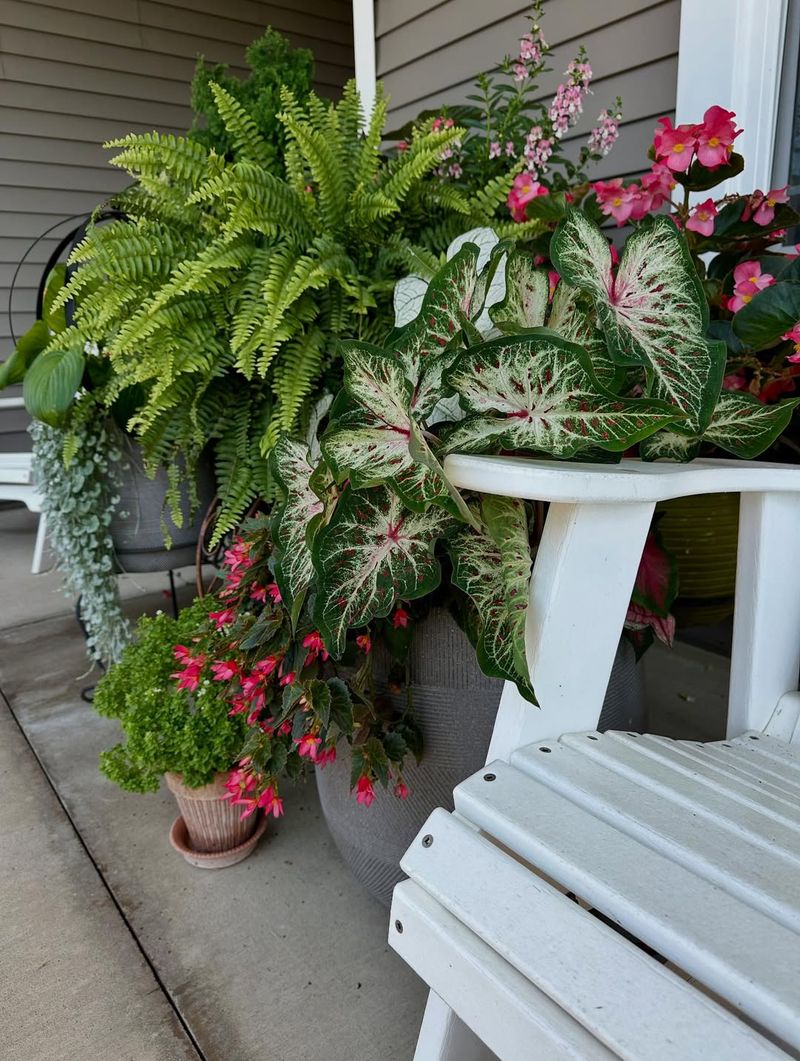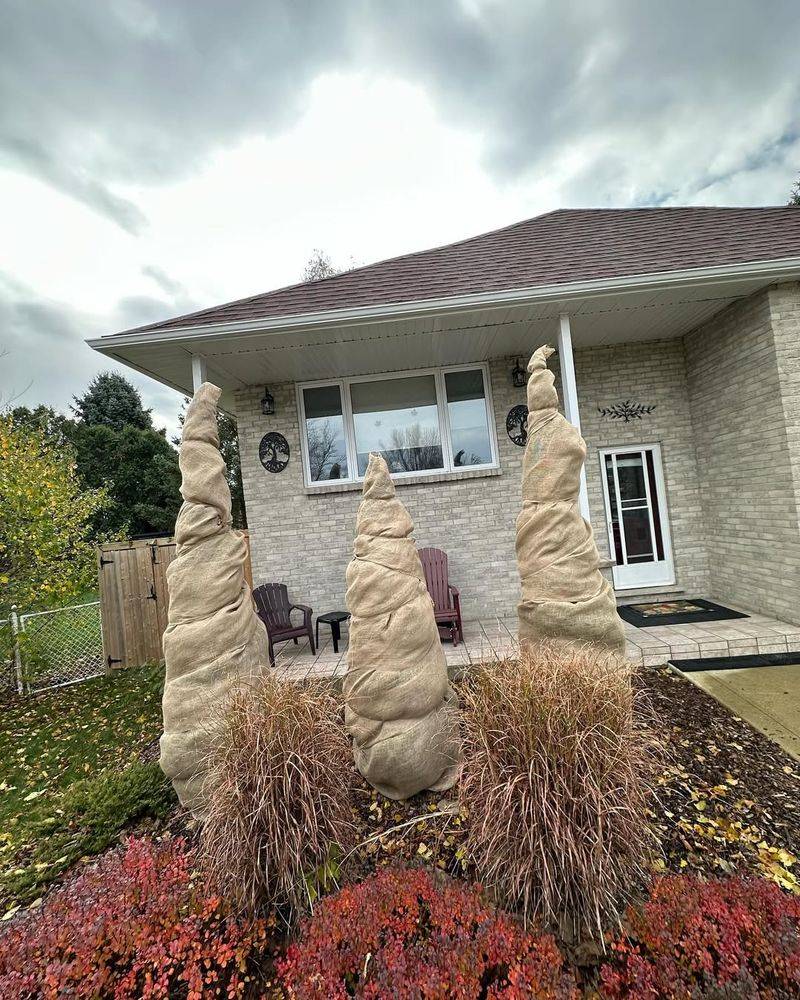Michigan frost hits fast, and I’ve learned that pots and planters feel it just as much as the plants inside them. A few simple tricks can keep them safe, sturdy, and ready to go again once spring rolls back around.
It’s honestly such a relief when you don’t have to replace cracked containers every year. Let me walk you through the easiest ways to keep them protected.
1. Move Containers to Sheltered Locations
Relocating your pots closer to your home’s foundation creates a natural barrier against Michigan’s freezing winds. Walls radiate stored heat throughout the night, keeping the surrounding area several degrees warmer than open spaces.
Garages, covered porches, and unheated sheds work perfectly for this purpose. Even moving planters under roof overhangs helps shield them from direct frost exposure.
Your plants will thank you when spring arrives, showing vibrant growth instead of frost damage.
2. Wrap Pots with Insulating Materials
Bubble wrap makes an excellent insulator for ceramic and terracotta containers during Michigan’s coldest months. Simply wrap the material around the pot’s exterior and secure it with twine or tape.
Burlap, old blankets, or even cardboard boxes provide similar protection against temperature swings. The key is creating an air pocket between the pot and the wrapping material.
This simple technique prevents cracking and keeps root systems safe from sudden freezes that commonly occur across the state.
3. Elevate Planters Off Cold Ground
Frost travels upward from frozen soil, making ground contact particularly dangerous for container plants. Placing pot feet, bricks, or wooden blocks underneath raises them above the cold surface.
This elevation allows air circulation beneath the container, preventing moisture from pooling and freezing. Michigan’s freeze-thaw cycles can crack pots sitting directly on concrete or stone patios.
Better drainage also results from this method, protecting both the container and the plant roots from waterlogged conditions that worsen in cold weather.
4. Apply Mulch Layers for Root Insulation
Spreading a thick layer of mulch over the soil surface acts like a warm blanket for your plant’s root system. Straw, shredded leaves, or wood chips all work wonderfully for Michigan gardeners.
A three to four-inch layer traps heat rising from the soil while blocking cold air from penetrating downward. This protection proves especially valuable during those unexpected late-spring frosts common throughout the region.
Remove excess mulch once temperatures stabilize to prevent rot and allow proper spring growth.
5. Group Containers Together for Warmth
Clustering your pots in a tight arrangement creates a microclimate that shares warmth between containers. Plants naturally release heat through transpiration, and grouping them amplifies this effect.
Position larger pots on the outside to shield smaller, more vulnerable containers from wind exposure. Michigan’s harsh northern winds can quickly rob heat from isolated planters sitting alone.
This method works particularly well on patios and decks where moving everything indoors isn’t practical or possible for space reasons.
6. Use Frost Blankets and Row Covers
Lightweight fabric covers designed specifically for frost protection allow sunlight and water through while trapping warmth around your plants. Drape them over containers before sunset when Michigan temperatures typically plummet.
Secure the edges with stones or clips to prevent wind from blowing them away during nighttime storms. These covers can add several degrees of protection during mild freezes.
Remove them during daytime hours to allow proper air circulation and prevent overheating on those surprisingly warm winter afternoons the state occasionally experiences.
7. Switch to Frost-Resistant Containers
Investing in fiberglass, resin, or thick plastic pots eliminates many winter worries for Michigan gardeners. Unlike terracotta and ceramic, these materials flex slightly when water freezes inside them.
Wood containers also withstand freezing temperatures better than clay options, though they require occasional sealing to prevent rot. Metal planters conduct cold efficiently, making them less ideal choices.
Choosing the right container material from the start saves money and frustration, preventing those heartbreaking cracks that appear each spring after harsh winters.
8. Create Windbreaks Around Plant Areas
Building temporary barriers using stakes and burlap screens blocks Michigan’s bitter winds from stealing heat from your containers. Position these windbreaks on the north and west sides where prevailing winds typically originate.
Hay bales, lattice panels, or even stacked firewood can serve as effective wind barriers. Reducing wind speed by even fifty percent dramatically decreases the windchill factor affecting your plants.
This strategy works especially well for larger container gardens where moving individual pots becomes impractical or physically demanding for gardeners.

